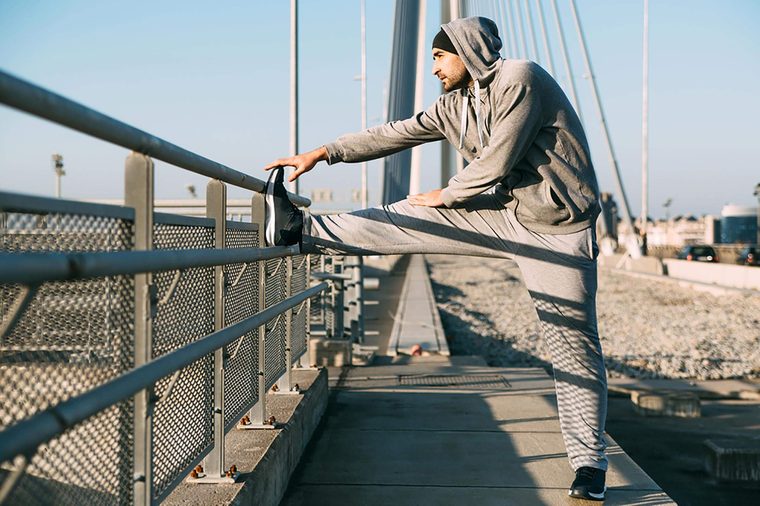
Why you should exercise outside in winter
Plummeting temperatures, icy winds, and the fact that daylight disappears before the work day ends can make it difficult to get motivated to go outdoors for a workout, but a recent study shows that exercising in colder temperatures can help burn more calories. Simply existing in a cold environment is more energy demanding than being in a warm environment, says Cara Ocobock, PhD, an anthropologist at the University of Albany. Her study found that people who hike in temperatures of 15 to 23 degrees burn 34 percent more calories than those who hike in more comfortable (mid-50s) temperatures. While the subjects of the study carried backpacks and hiked in the Rockies, there are several cold-weather activities that deliver high-calorie burning results—as long as you follow the essential rules to exercising outdoors in winter.
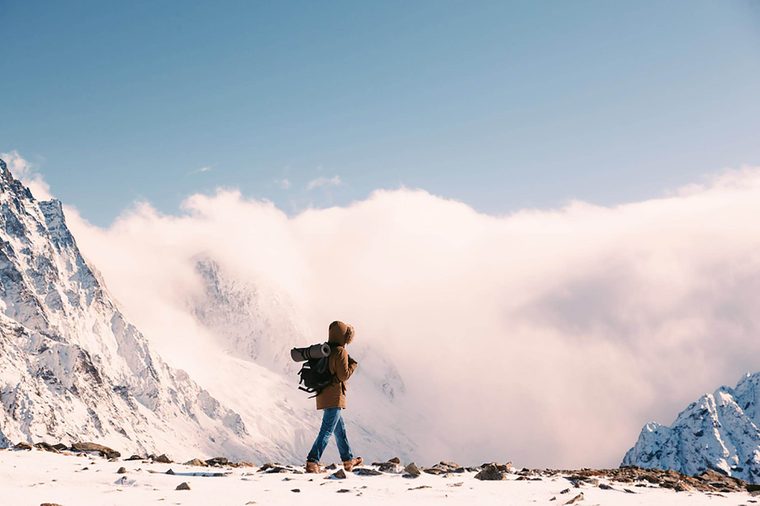
Winter hiking
Pristine snow covered trees, mountains, and lakes are all good reasons to go for a hike during the winter (along with less-crowded trails and the absence of bugs). While hiking on soft or compact snow requires more effort, it’s also one of the quickest ways to lose weight in cold temperatures. “During winter, you may be hiking on snow or the same trails used by skiers,” says Mike Bracko, a sports physiologist and skating coach. “It’s like walking or running in sand, and it is more difficult, so you are automatically burning more calories.” Hiking on uneven terrain has been shown to burn more calories; add hiking poles and you can burn even more. “Hiking with poles helps with stability and you burn more calories because you are using your arms,” says Bracko. Hiking is also good for your brain, and it can help improve mood, creativity, and memory.
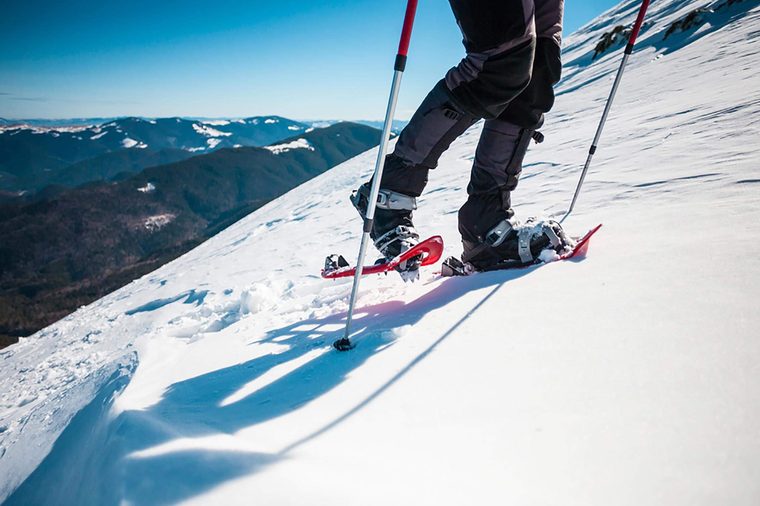
Snowshoeing
The activity burns 45 percent more calories than walking or running at the same speed—anywhere from 400 to 700 calories per hour, depending on your weight. Add poles, take on hilly terrain, and venture off the trail into deep snow, and the intensity of the exercise and caloric burn increases. “It takes a lot to drag a snowshoe out of the deep snow,” says Lisa Milbrandt, an athletic trainer and fitness supervisor for UW Health, the integrated health system of the University of Wisconsin-Madison. “Snowshoeing also challenges the muscular-skeletal system in a different way than jogging or walking.” The lifting motion works the hip flexors and quadriceps more than regular walking. Beginners and those just starting an exercise program can use poles to help with balance, Milbrandt says. Using poles also works muscles in the arms, shoulders, and back. “With snowshoeing, you can get a good workout and still stay in a place that is safe,” she says. “And when you are comfortable with the sport, you can increase the duration or the intensity by heading off trail.” Try out this easy-to-learn sport at one of these destinations that are even better to visit in winter.
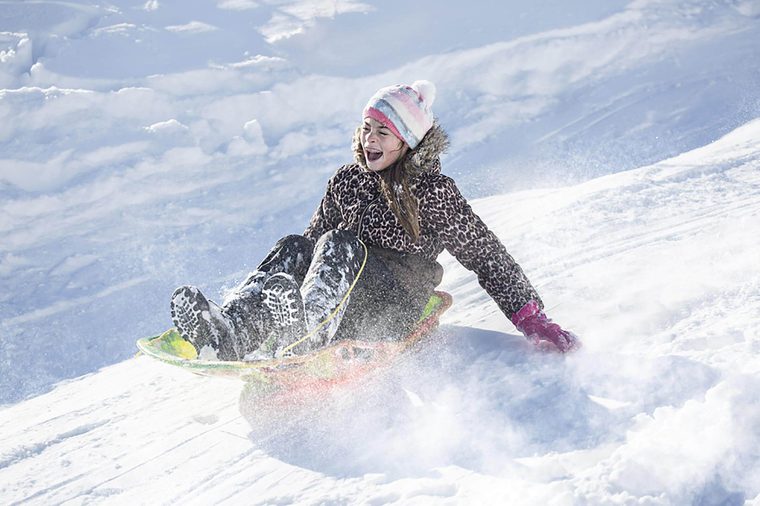
Sledding
To reap the incredible calorie burn of sledding, all you need is a snow-covered hill. Sledding is a fun activity for families and a perfect opportunity for adults to relive their childhood memories. Steering a sled downhill and then dragging it back uphill is an aerobic workout that works your arms, legs, and glutes, and it can burn close to 500 calories in an hour (depending on your weight). People go to the gym and get on the stair climber or train by running hills during the warmer months. With sledding, you get similar results, says Milbrandt. To add intensity and burn even more calories, pull your kids up the hill on the sled.
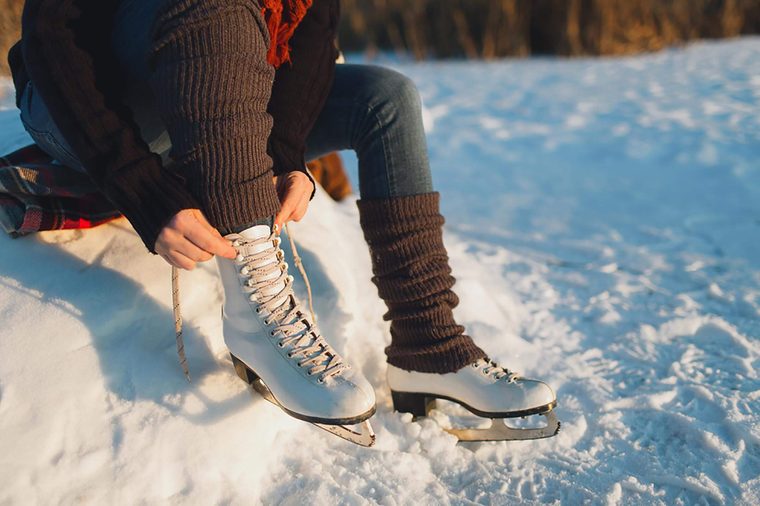
Ice skating or ice hockey
Whether playing hockey or gliding across a pond, skating delivers the benefits of fresh air and exercise, says Bracko. “Skating on a frozen lake can be beautiful, but playing hockey is better if you are looking to burn more calories,” he adds. Both activities work the quads and glutes, adductor and abductor muscles, and the core, which is why they’re among the quickest ways to lose weight. While skating leisurely won’t deliver a huge calorie burn, you can increase caloric expenditure by making as many turns as possible. “When you turn, you have to bend your knees more—you turn left, then right, you glide, you crossover—either way you get a stronger muscle contraction,” he says.
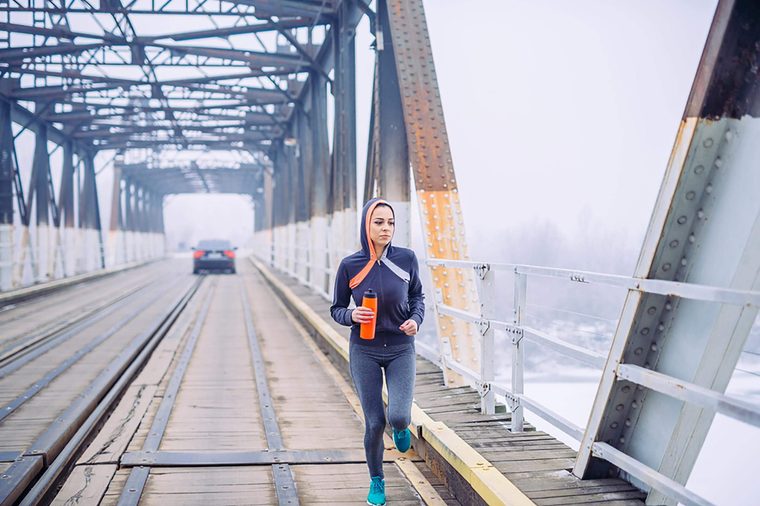
Running
Running in the cold is actually easier than running in the heat, and research shows that marathon runners can run faster and go longer distances in colder temperatures. That’s because your body takes longer to get hot and sweat. “People think because it is colder, their body needs to work harder to warm up but when it is hot, your body has to work hard to cool off,” explains Bracko. While you need to take precautions when going for a winter run, especially on icy and snowy roads, running on snow and softer surfaces can help with your training by slowing you down and increasing the intensity. Just be sure you’re avoid the most common running mistakes you don’t realize you’re making. If the conditions are too treacherous, Bracko recommends staying indoors or wearing cleats like Ice Trekkers. “They are great for hiking when it is icy or for walking in residential areas where people don’t clear their sidewalks,” he says.
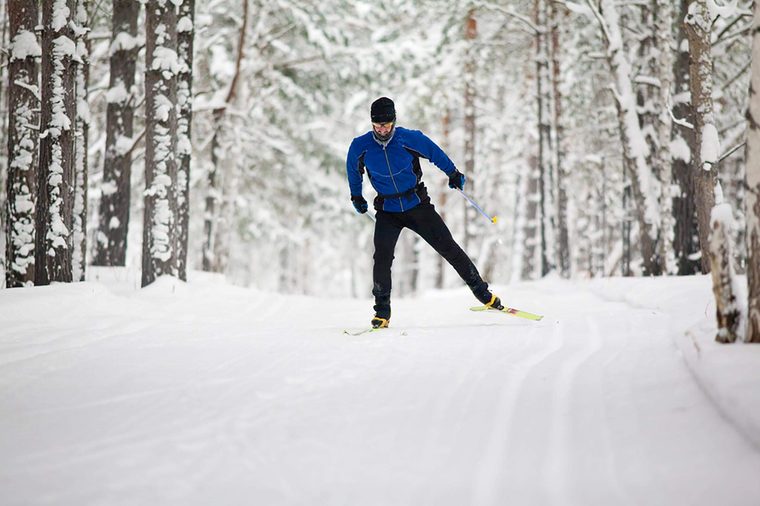
Cross-country skiing
Cross-country skiing is easy to learn, accessible, low-impact, and more affordable than downhill skiing. “Cross country skiing also outweighs downhill skiing metabolically,” Milbrandt says. According to research, it takes approximately two-and-a-half hours of alpine skiing to reach the same energy expenditure as one hour of cross-country skiing. Considered the gold standard of aerobic winter sports, cross-country skiing requires the use of almost every muscle in the body: legs, glutes, core, and arms. “It is not our natural gait—it’s not a natural movement for any animal,” says Ocobock, but that makes it one of the quickest ways to lose weight. While the “classic” style of cross-country skiing, which follows groomed paths, can burn up to 500 calories in an hour, skate skiing requires more technique and is more physically demanding.
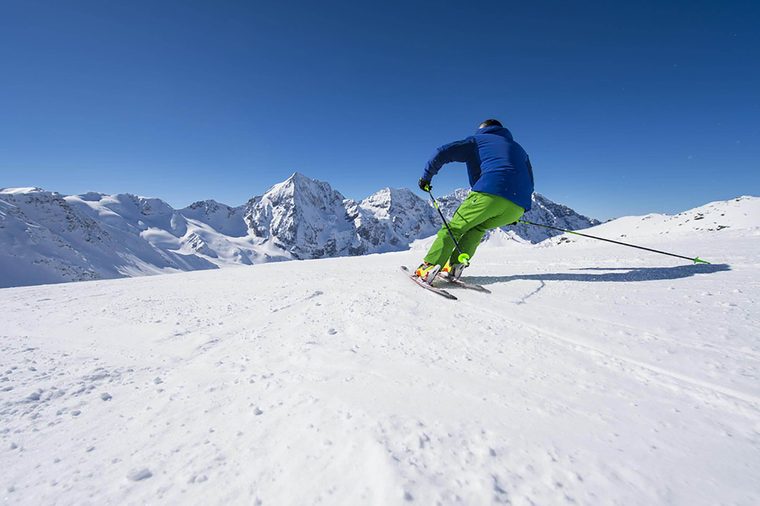
Downhill skiing
While downhill skiing on beginner terrain at a leisurely pace can’t match the calorie burn of cross-country skiing or snowshoeing, you can add intensity and burn more calories simply by making some turns. “Any time you have more muscle contractions, you burn more calories,” Bracko says. You can also hike up parts of the mountain to reach trails that have seen fewer skiers and, as a result, have more untracked terrain. Skinning is the ultimate calorie burner. It requires foregoing the ski lift in order to hike up the mountain using skis outfitted with special bindings and “skins” (strips that attach to the bottom of skis), and then schussing back down.
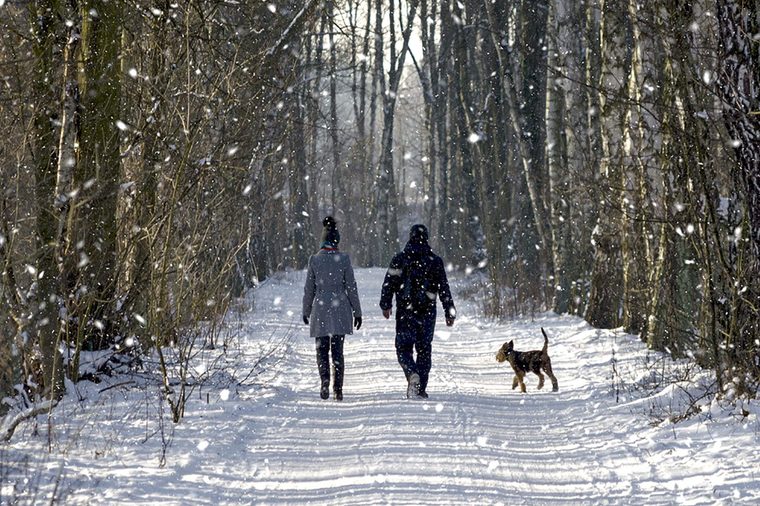
Winter walking
Whether walking the dog or doing laps around the neighborhood, walking is a great low impact way to exercise. “Taking a walk on your lunch break or any time the sun is shining is also one of the best ways to get a dose of vitamin D during the winter months,” Bracko says. Being outdoors in the crisp, cold air helps clear your mind and reduce stress, while the extra energy needed to walk through snow or into the wind can help with weight loss. For those with orthopedic limitations, Milbrandt suggests walking with walking poles. “They can support themselves and walk further and for a longer duration if they use poles,” she says. If you still have reservations about outdoor winter exercise, combine workouts with acts of charity, like walking a sick friend’s dog. Check out any of these products for winter walks that will make the cold more bearable.
